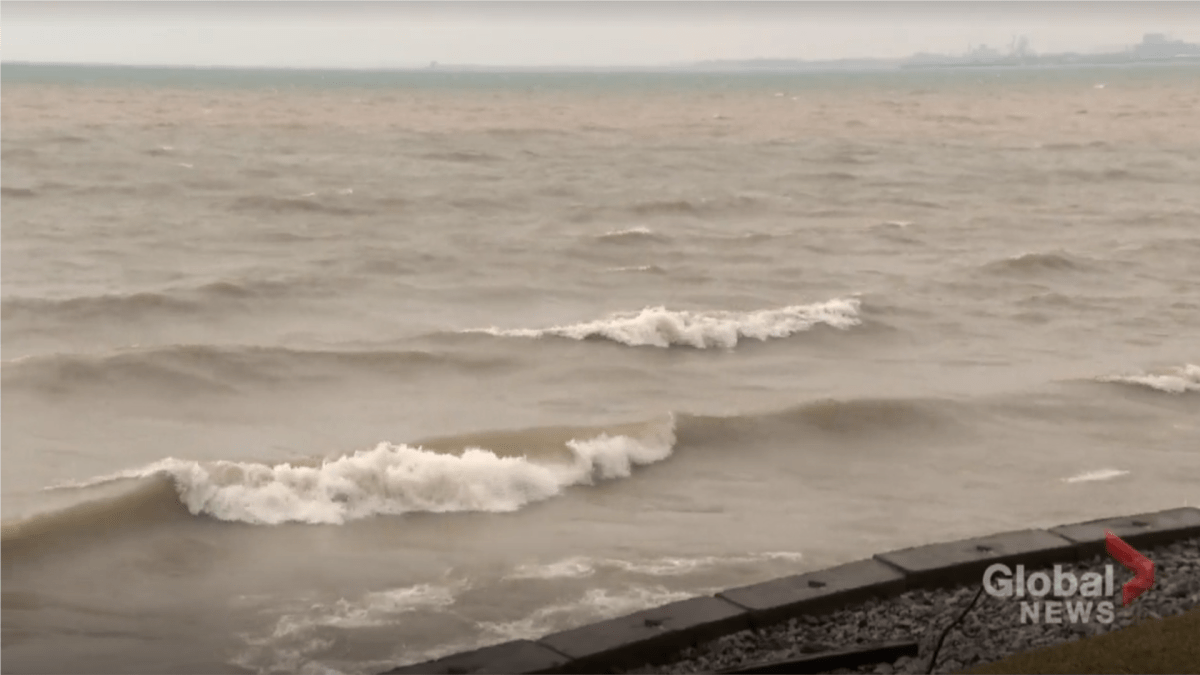Ontario Provincial Police (OPP) in Haldimand County say calmer waters have allowed divers to enter Lake Erie just off of Peacock point on Wednesday to continue a search for the body of 9-year-old Alexander Ottley.

It’s only the second time in five days since the incident that dive teams have encountered favourable weather to allow for a safe search of the lake. Ottley and another boy were swept into the lake on Saturday afternoon.
Const. Rod LeClair told Global News that divers were unable to resume a search on Tuesday for Ottley due to rough waters and a build-up of ice, which limited the focus to just the shoreline and aerial searches.
LeClair says the search has been going on since Saturday afternoon when it began as a joint rescue operation with the OPP and U.S. Coast Guard.
“We had a joint rescue coordination center also here with the helicopter. There was a vessel in the water, an icebreaker,” said LeClair.
Investigators believe Ottley was one of three children that approached an “ice edge” at Peacock Point around 4:30 p.m. on Saturday. Two of them were hit by a wave.

An eight-year-old boy was rescued after a man and woman were able to pull him from the water’s edge. However, Ottley did not resurface.
“At approximately 7:30 p.m., it was deemed to be a recovery operation, ” said Le Clair.

Get daily National news
The only underwater search over the last five days was on Monday when waters were calm with little ice to break through on the surface.
However, Tuesday was a different story as high winds produced large waves on Peacock Point’s shoreline, according to the OPP.
Residents, including Ottley’s great grandmother, gathered at a nearby community center next to the lake on Tuesday to drop off meals and baked goods for the volunteer searchers and police.
Debbie Vallee, who knows the little boy’s family well, says Peacock Point is an area with only 300 homes — half of which remain empty during the winter.
“It’s been a really rough time for everybody. Everybody is suffering and praying and looking,” said Vallee.
Christine Cree Anderson, who lives right at Peacock Point, says nearby residents have a eat appreciation for first responders who were quick to respond to Saturday afternoon’s call.
“Emergency services deserve high praise for such a quick response, my cottage was surrounded by OPP, ambulance, fire trucks, then helicopters came. It was all so quick,” said Anderson.
On Tuesday, the Grand Erie District School Board revealed that Alex was in grade 3 at Jarvis Public School.
“It is with great sadness that we offer our condolences to the family of Alexander Ottley,” spokesperson Kimberly Newhouse said in a statement from the school board.
Alexander will be deeply missed by his friends and classmates as well as the staff at Jarvis Public School. He will be remembered as a bright, loving boy who was passionate about his friends, Pikachu, dinosaurs and video games. His absence will be felt by many in the Jarvis community and all across our board.
The school board will lower flags across the district for the three days, said Newhouse.
Global News has reached out to the family of Ottley who said in a statement they were “overwhelmed” and would rather not speak until Ottley’s body is found.










Comments